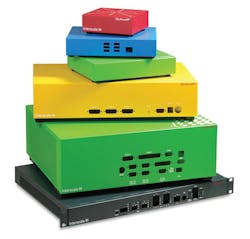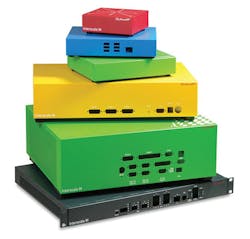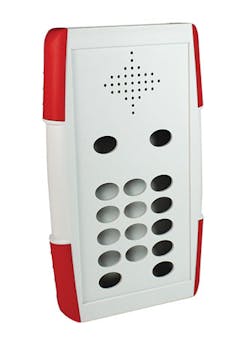3 questions to consider when choosing an enclosure
By Carrie Rubin, Newark element14 and Nicola Kay, CamdenBoss
Demand for aesthetically appealing and cost-effective enclosures often requires engineers to straddle the line between form and function. Striking a balance between the two, however, this is no easy task. Following are three questions engineers should consider when searching for an enclosure that blends style and substance.
The questions and answers relate to product-design engineers and to system engineers and planners. The material in this article can be beneficial to engineers who design products that are housed in enclosures, and to professionals who are responsible for the installed systems containing enclosures and the electronics equipment contained within them.
How will the enclosure be designed, installed and maintained?
There are a wide variety of enclosures to choose from, each with its own unique set of advantages and disadvantages. The best enclosure, however, is one that meets the needs of your specific product. Design is one factor that plays a big role in determining whether an enclosure is right for your application. While ventilation slots help cope with the heat created by circuitry within the enclosure, they also weaken the overall strength of it. Other options such as a fully sealed base boost strength and reduce assembly cost for users, but can fall short when it comes to lowering the temperature within the enclosure. It is important to have a good understanding of which elements are crucial to the success and efficiency of your product.
Before making any decisions, consider how the components fit within the enclosure to be sure you’re not sacrificing valuable functionality in favor of a sleek design. It is also important to take into account how you plan on installing and maintaining the enclosure down the road. A wall-mounted product, for example, needs to be easily removable or include a detachable front panel that allows for any quick fixes to be made.
Is the molding material flame retardant?
Although design may be what catches the eyes of most consumers, the enclosure’s resistance to extreme temperatures is vital in predicting whether an engineer’s application sinks or swims. Most enclosures on the market today are molded from acrylonitrile butadiene styrene (ABS) or similar materials. Even though the materials are often UL94-V0 flame retardant, many users fail to realize moldings made from such materials may not be flame retardant, due to thinner side walls that cannot handle excessive heat.
Avoid leaving your product susceptible to failure from high temperatures by using polycarbonate, an alternative that improves the robustness of the molding. The added durability is especially important for areas in which heavier components, such as relays and transformers, are fitted. Adding a matte finish to the material will help cover up the polycarbonate’s potentially unappealing exterior.
What Ingress Protection marking is required?
The ultimate goal of any enclosure is to keep the application inside safe at all times. But until it’s put to the test, it can be difficult to tell just how much protection an enclosure provides. The Ingress Protection (IP) marking classifies and rates the degree of protection offered against intrusion from body parts, dust, accidental contact and water. Published by the International Electrotechnical Commission, the IP marking aims to provide users with a level of detail that extends beyond vague terms such as “waterproof.”
The rating consists of two digits, the first of which indicates the enclosure’s success in keeping out solids. This is followed by a second digit that highlights the level of protection against liquids. The higher the number, the better an enclosure protects against solids and liquids. You should also note that any computer numerical control (CNC) milling or drilling will affect the IP marking of your enclosure, making it important to double check the rating as often as possible. Enjoy peace of mind by specifying an enclosure that ensures the safety of the product inside.
An enclosure affects both the appearance and functionality of an application. Choosing one that maximizes both attributes takes a lot of time and research. After answering the three questions raised in this article, your application will be set up for success thanks to an enclosure that balances form and function.
Carrie Rubin is senior product manager at Newark element14 (www.newark.com). Nicola Kay is managing director at CamdenBoss Limited (www.camdenboss.com).


